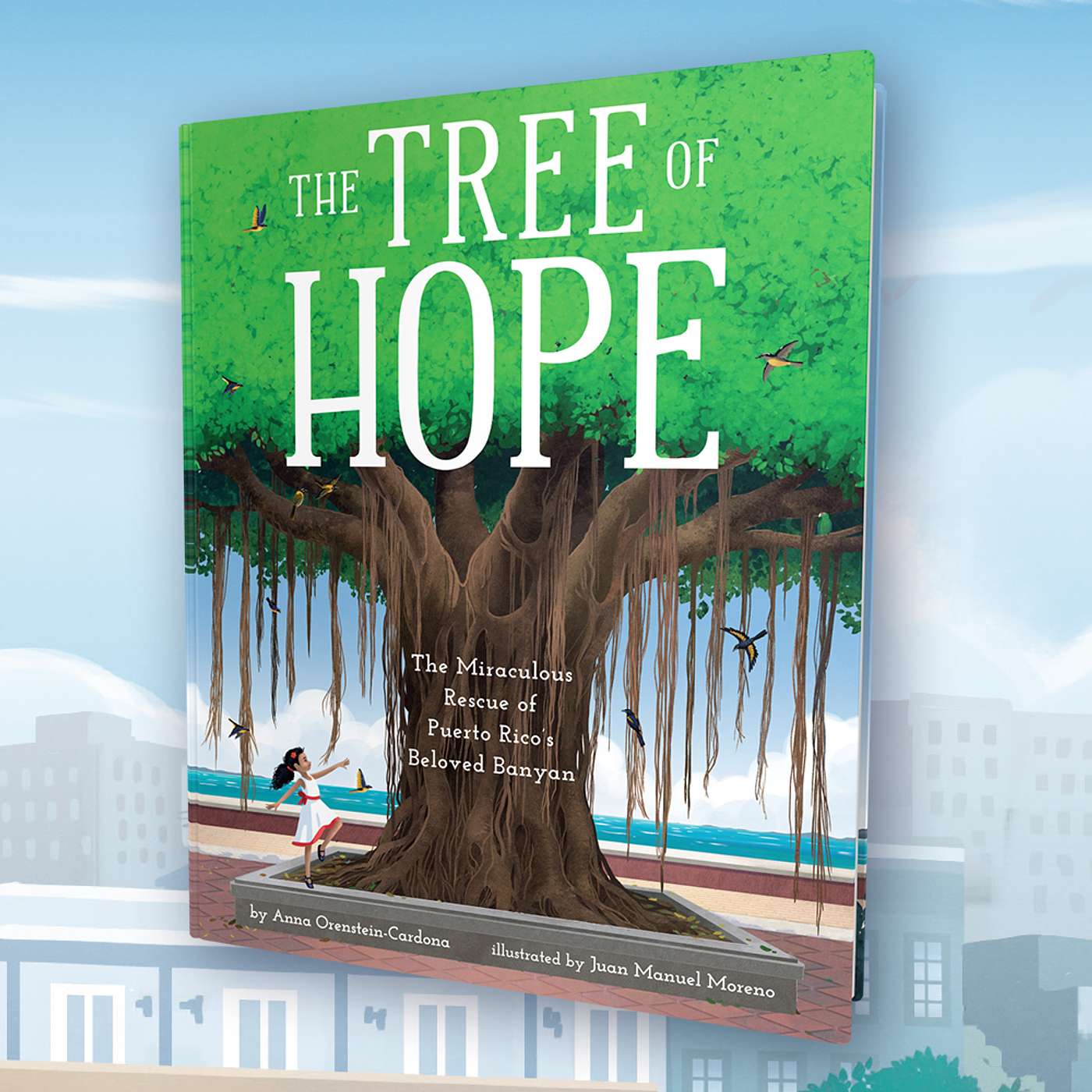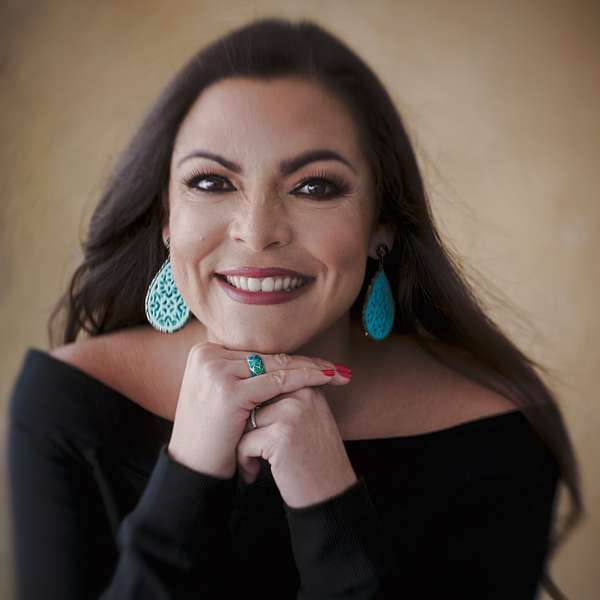
Stories of Change & Creativity
Navigate change, spark creativity, and live your best life.
Conversations with students, artists, professors, entrepreneurs, writers and everyday changemakers.
Listeners learn:
- How to navigate change with courage and clarity
- Personal stories of reinvention and creative breakthroughs
- Practical tips and productivity hacks
- How to overcome self-doubt and unleash creative potential
https://linktr.ee/judyoskam
Stories of Change & Creativity
Puerto Rico’s Tree of Hope: Resilience and Spirit with Anna Orenstein-Cardona
Join me for a conversation with Anna Orenstein-Cardona, a certified financial educator, author, and Puerto Rico native. We discuss how her personal experience with Hurricane Maria inspired her heartwarming children's book, The Tree of Hope. Anna shares her emotional journey of witnessing the hurricane's destruction from afar and its impact on her family back on the island.
Discover the powerful intersection of Puerto Rico's culture, history, and U.S. citizenship as Anna opens up about her unique path from grief and loss to writing a children's book that celebrates hope and the human spirit. Hear how her hard work and determination secured her a job on Wall Street and how it fueled her passion to help others learn about finance. We also dive into Anna's creative process, her experience with Faber Academy, and valuable insights into the world of children's book writing and publishing.
Finally, we discuss the ongoing impact of The Tree of Hope and the joy it brings to children and readers alike. Anna reflects on the supportive community that came together to rescue the famous Banyan tree in Old San Juan, Puerto Rico, and the powerful message of hope it represents.
BIO:
Anna Orenstein-Cardona was born and raised in Puerto Rico. She received her Bachelor of Science degree from the Massachusetts Institute of Technology (MIT) and is an alum of Faber Academy (Writing a Novel and Writing for Children). She is active in the Society of Children's Book Writers and Illustrators (SCBWI).
Anna is an NFEC-certified Financial Educator (CFEI) and Wealth Coach with over 22 years of experience working in global financial markets. In 2020, she founded Wear Your Money Crown® - an empowering, woman-owned financial education and coaching firm that is passionately dedicated to bridging the financial inequality gap.
Her debut picture book, The Tree Of Hope, was published by Beaming Books in 2022.
Currently, Anna is working on developing various projects, including more children books. She lives in London with her two very special furbabies and her Southern Gentleman husband, although spends as much time as she can in Puerto Rico. Where she regularly gets involved in rescuing abandoned animals and supporting local charities.
Learn More About Anna's Author Journey and The Tree Of Hope:
http://www.annaorensteincardona.com/
Purchase the Book:
Amazon, Barnes & Noble, Target,
Want to start your own podcast?Start for FREE
Disclaimer: This post contains affiliate links. If you make a purchase, I may receive a commission at no extra cost to you.
Hi Friend - Thanks for listening!
Check out my TEDx talk. Why you should take action - then figure it out.
Welcome to Stories of Change and Creativity. I'm Judy Oskam, a professor at Texas State University. This podcast features purpose-driven individuals who inspire, motivate and educate. In September 2017, hurricane Maria hit the island of Puerto Rico. The hurricane devastated the island, causing damage and destruction Far away. Anna Orenstein-Cardona was watching from New York City. She was born in Puerto Rico. Her family was there. You might remember Anna from our interview in Season 2. She's a London-based certified financial educator, founder of Wear Your Money Crown and Author. She's published a children's book called The Tree of Hope. It's the story of the historic banyan tree in old San Juan, Puerto Rico. Anna says she wrote The Tree of Hope as a reminder of the power of community and never giving up. I hope you enjoy our conversation.
Anna Orenstein-Cardona:I'll tell you the exact date and time and everything, because this is so heartfelt, but on the 20th of September 2017, Puerto Rico got devastated by a category 4 slash 5. And I'll explain a little bit about why I say the difference in number. We got hit by Hurricane Maria. It was the worst natural disaster to hit our island in over 80 years And basically, there was no single town that was left unhurt. The path of the hurricane was devastating to nature, devastating to human beings, and so, as you can imagine, being from Puerto Rico and seeing this was not only devastating for me, but also for my family and friends, who are all located on the island. And so what happened is, when Hurricane Maria hit, i was actually in New York. I had just celebrated my engagement and my 40th birthday, so I'm giving away my age.
Anna Orenstein-Cardona:That's OK, that's all right, and my family had just returned to Puerto Rico that Monday, and the hurricane hit on Wednesday. So you could imagine the stress. Because the truth is that, listen, when you're from the Caribbean and you hear the word hurricane, you're like, ok, another hurricane has come. Sure, it's pretty common, right, well, we'll be fine. It's pretty common. Many times we're very blessed because of the rain force and the change in atmospheric pressure on the island. Sometimes they divert and we're very blessed.
Anna Orenstein-Cardona:But that was a devastating summer between hurricanes all around the Caribbean And some of them had diverted, some of them had slightly swept by, but this one, literally, was at 10 am landed and it was just devastation. And one of the reasons why it was so devastating is because it was a slow moving hurricane. Most hurricanes will move around 10 miles per hour to 12 miles per hour And this one was 18 to 20, meaning that the amount of rain, the amount of winds over the area, the surface area, was so huge and impactful. And so during that time, right, I was in New York, I was trying to get my family out because the whole system collapsed There was no water, there was no electricity. We didn't have our family home set up in that time to have any kind of you know backstop, let's say, luckily my sister did. She had my family there, but no one expected it to last so long and to be so devastating. So even if you had prepared for two weeks we're talking months that people didn't have these you know resources of water and electricity. So I was trying to get my family out And at the end, after a lot of effort through my whole family, thank goodness we were able to get them to the US because my parents at the time were quite elderly and they needed to have certain things, especially oxygen and certain things at night for my mom to sleep, and so we got them out And what happened is I ended up taking them to London, where I am based, and during that time I was very involved with relief efforts on the island through my connections, both alumni.
Anna Orenstein-Cardona:I did pre-med at MIT, so luckily, a lot of my friends are doctors and were donating their awesome services. And I was connecting people And I was taking care of my family and my pet rescue here in Puerto Rico as well, which you know. Everything blew away, so there was a lot going on in the vaccines And one day I'm reading the news as I did, catching up every day on the stories, and I saw an article that the famous Banyan tree of Old San Juan, that had survived over 115 years every single natural disaster, had been lifted up by its roots and drowned in the ocean. And I remember just feeling like, like, do you know when it's like you're already used to such bad news, but then you get that one thing that sends you over and you're like, oh my God, i've lost, like I felt I lost a childhood friend. And then I started to read about all the efforts people who had lost everything were doing to save this tree, because this tree, which weighed more than 30,000 pounds it was taller than 50 feet in height, this massive focal point for the community. People would get engaged under the tree, mothers would sing lullabies to their babies, lots of tourists loved.
Anna Orenstein-Cardona:It was a center point because it's historically located by the gate of San Juan, which is one of the five gates of the old city And it is one of the most precious and well-known gates from history.
Anna Orenstein-Cardona:I'm talking hundreds of years, from when we were part of, we were part of Spain, and dignitaries and many people would go through that gate and go to the cathedral to give thanks for their voyage. So it was again a very focal point. It was a very special tree known by generations of people And to see the community come together to save this tree and literally, it being a miraculous rescue. That's why the tagline on the book cover is the miraculous rescue for the Rico's beloved Banyan tree, because there were even stories that the roots started to walk on their own back into the ground, like it's just such a beautiful story And I said, oh my God, this story needs to be told, like the world needs to know about the story of hope in the eye of a fathomable disaster. And that's it. So that's the inspiration of the story And I can tell you later on more about how that became from my brain to paper to get it becoming a book.
Judy Oskam:Well, the actual tree itself, though. It's a true story. That's a true story. So did the tree survive? Is the tree there today?
Anna Orenstein-Cardona:Yes, and actually I just went to visit the tree yesterday because I was in Old San Juan for good Friday doing some of our traditions here in Puerto Rico, which is to visit seven churches in the Old City and pray, And the tree is still standing. Yes, Yes. So, of course, the size. It's been now over five years, So the size has grown from when I saw the tree. I'm trying to remember if it was seven months. It was around 10 months after Hurricane Maria, when I was finally able to physically come back to the island. My family had returned And it looked like a shrub, you know, versus a giant that was taller than the wall around the city. But the tree is alive and well.
Judy Oskam:Good well, and tell us a little bit about the story. Tell us about the purpose of the story.
Anna Orenstein-Cardona:Yeah. So the purpose of the story really is to number one, share about Puerto Rico. I'm very proud to have been born and raised here And a lot of people don't know that we are American citizens, like you'd be surprised. Even now, as an educator and as a children's author, i go to schools in the States and I talk about Puerto Rico. And there was this one school in New York where I asked do you know where Puerto Rico is? And they're like Africa. And I'm like, oh my God, no, it's in the Caribbean. And we're US citizens.
Anna Orenstein-Cardona:And let me explain the history about it. But the beauty of our history is we are a mixture of Peinos, which is our original Indian population that inhabited the island, a mixture of Spanish and of African roots. So we're equestrian, our language is mixed with both, and then, after the Hispanic American War, we became part of the United States And that is why and I'm pretty sure and I need to double check, but I'm pretty sure that the first US citizenship was in 1917. And so we don't have Puerto Rican passers, we have American passers-in. So I'm very passionate about sharing my culture, saying we are Latino but we are Americans, as well.
Anna Orenstein-Cardona:And then that was one of the points of the story. The second is to show how, in a period of devastation, you still, by coming together and uniting forces as a community, you can have and bring hope to the world. And I think that also, the tree in my story for sure, is the representation of my island And it's a representation of complete devastation where it fell to the ground. And there are some scenes in the story which is a very interesting point I will raise, because there was a line where I was basically explaining how the tree was transitioning between two worlds And I didn't know if that line would be acceptable for children, and it's something I worked with my editor on and she loved it because she's like this is parents, no matter what their beliefs, religion, are, they can explain their interpretation of what that sentence is. You left it open enough that people can explore, but between you and I, judy, it was a period of time.
Anna Orenstein-Cardona:Even though I wrote the book in the fall of 2017, i did not get my book deal until 2021. So I had basically started to work with an editor after submitting my pitch for the story on Twitter. So social media helped me to land my publishing deal. It's called Latin's Pitch, and it's for Latino creators, illustrators and writers to get a stage in voice by pitching their stories once a year to the world of publishing. And so I had signed my deal in August 2021, and I had lost my mother to cancer, sadly, around a year before, and so for me, when I was writing the story, the trials were representing my mother and seeing her transition between both worlds, and so that was the actual inspiration, for those words was going through the grieving process that I did by losing my mom, but it was a perfect interpretation of also what my country went through. So that is an example of how an author takes real life experiences and adds elements to a story.
Judy Oskam:And you didn't start out to be an author. You started with humble beginnings. Can you start with your time from the beginning of your career and your education?
Anna Orenstein-Cardona:Yes, with pleasure. So I was born and raised in Puerto Rico And I was always you know one of the things when you grew up, my group. I always describe it as a very humble household where money was tight but love was plentiful. It's a perfect description of my childhood, and I remember thinking at a young age when I saw the financial struggles of my parents that I need to do something to help them. I wanted to buy them a home so that we didn't have to move homes every year, every two years, because rental prices were increasing, and so I thought okay for me to get a good career, it's very important to get into good university and get a good education, and so it was very blessed to my parents. They invested in our education.
Anna Orenstein-Cardona:We went to some of the best schools that we could in Puerto Rico and the metropolitan area, and so I worked really hard to get into a good university, which was Massachusetts Institute of Technology, mit, and in MIT I studied brain and cognitive sciences, with all the preferences for pre-medicine. I completed it because I thought you know what I want to be a doctor. It's a great way to give up service. And again, what I realized it was the financial decision When I got to be a senior at MIT and I had done, judy, every single thing by textbook that you could imagine to get into a great medical school. I had done two-year research in Harvard School of Public Health, i had worked in hospitals, i got scholarships for all these amazing things. And then I realized, wow, i have all these student loans and I'm going to incur and I'm talking 20 plus years ago. It would probably have been another $300,000 to go to medical school And I thought, if I do that, there's no way I can help my family right The way that I wanted to do so.
Anna Orenstein-Cardona:And so senior year, when I had done my MCAT and everything, i thought, okay, i'm going to go get a job where I have the potential to make some money and then I'll go back to medical school. So I applied to a job on Wall Street And I got it, which is so bizarre, Judy, because I had no idea. Like I remember my friends who were and MIT doing economics and doing, let's say, sloan, which is the business school. They sat down and like, okay, Anna, this is what a bond is, this is what stock markets are. Because I had no clue, so I showed up to this job. I had to use my credit card to buy my first suit and took the bus from Boston to Manhattan to interview And the firm ended up being merged with Credit Suisse. First Boston, but it was called Donaldson Lufkin, and Jenrette- DLJ was a very, very good boutique investment bank in the US on Wall Street.
Anna Orenstein-Cardona:And so in the interview it was hilarious because I showed up and there was all these old dudes reading the Wall Street Journal and like there I am, and I ended up being interviewed by the traders, the head of training, the head of different departments And cause, actually, I didn't tell you the role was for trading government bonds. And so we went through the interview and all they wanted to know was about my research at Harvard and about my experience at MIT. They wanted to see how I thought about things. And it was really fascinating because I thought they would be asking me more good stuff and it wasn't. They wanted to know about, like, okay, well, what is brain and cognitive sciences? What is the research you're doing? It was on Alzheimer's, the research I did at Harvard, and I laughed and I was like there's no way they're gonna give me a job. And then they called me back for an interview and this time they flew me to New York, they put me up in a hotel, right The whole shebang this time. And they said to me in that second interview Anna, with your personality, you should be in sales and we think you would be a great role. And I'm like well, what is wait, sales, what is sales? And sales is a role where you work very closely with clients, one-on-one, and you execute trades with them, which are traders price, and so the traders are the risk managers, but you are the person that is the bridge between the client and trading, and so they love that.
Anna Orenstein-Cardona:I spoke Spanish, so I started to cover South American Central Banks, and the rest is history in a way. So my career started in finance, based out of a need to produce income to pay my student loans and to help my family, and I ended up falling in love with that career. I spent 23 years between New York and London working in that world, but I always had a creative side, Judy. I was always like I love stories, i love acting, and I was very blessed that there's an academy in London called Faber Academy, which is part of the Faber Publishing House, that did creative writing courses in the evenings and weekends, so I was able to balance my work, and that was in 2012,. I started to do creative writing courses to build my knowledge and how to write stories frankly and how. You know what, more than anything, Judy is how does the industry work, because publishing is a whole different bulging.
Judy Oskam:And so, with your growth mindset, you learned how to do the creative side And from the publishing side. take me through some of your creative process that you did daily or weekly to actually write the book. What's your process look like?
Anna Orenstein-Cardona:So actually this, if I look at books, it's probably my fourth, fourth to fifth book. I first started out writing an adult novel, which I still have and I need to query because there was interest. But there was a fine line between my job and that book, which I couldn't do when I was in that world publishing. So now that I have my own business I'm able to look at that more seriously. Then I wrote other.
Anna Orenstein-Cardona:So what happened is that first creative class that I was telling you about at Faber Academy. I did it for adult creative writing, for novels, and then I discovered that they did children's writing And I thought at the time hey, with my career in finance, i know that it would be more acceptable for me to publish children's books perhaps than these other types of books. And so I did that class and fell in love with children's writing. And it's just, i swear to you, children's writers are some of the nicest kind of souls in the world And I was just surrounded by these creatives that just wanna make the world a better place and wanna help children, and so beautiful and inspirational. So I met them and so my creative process was literally Stories that come to mind, and I'm very blessed that just stories come to me. I'll observe nature. I'll observe. You know, i'm an animal lover, i observe certain things. So one of the second books I started to write was inspired by feeling. Superheroes of the Caribbean, right, and so those are the characters and that's another book that I have that I'm trying to get published. And then from there I would write and pretty much start to query.
Anna Orenstein-Cardona:Query is the process where you send out letters and you're trying to find someone to represent your literary work. In my case that would be the first door of entrance. Or the guardians of the publishing world are called agents, right, and there's many different types of agents. But I was looking for a children's literary agent And I'll tell you it's not easy. You know, the competition for getting an agent is incredible And we're always told publishers never give book deals directly, it's just through agents. And so, just to give you an idea on statistics, i also became a member of the Society of Children Bookwriters and Illustrators, which to this day I'm an active member. I love them. If anyone listening to this podcast is interested in going into the writing world, for children's books especially, you should become a member. It is extraordinary the amount of resources you learn and people you meet, and one of the things I realized is just, it's a numbers game. You have an agent, right, who's representing their own authors. They get sent hundreds to, if not thousands, of query letters from people per month and they choose one to two new authors a year. So, again, the competition is so insane And so I had tried. Frankly, it's so interesting because I was speaking to my.
Anna Orenstein-Cardona:I have a critique group of Latin writers called Las Musas, which is awesome, and we were just at our session last Sunday and we were talking about. I said, okay, now it's time I go again and try to find an agent. And they're like well, how many have you queried? And I set up 10. They're like Anna, we've queried hundreds. And I was like Mama Mia, are you serious? I chose my top 10. I researched them, you know, mia. I looked at the books they represented And so, long story short. So my creative process was this it's just what inspires me. And then one of the things you learn is okay for children's books of this category, this is how many words need to be in this book. This is the structure, and so that's how I created. My creative process was the weekends And in the evenings after work, where I would work on my stories.
Judy Oskam:Did you have the illustrator already, or did they match you with the illustrator, or what?
Anna Orenstein-Cardona:That's a great question and something that might be helpful to people who again are thinking of doing the children's books Children's book, unless you are an author and illustrator. Do not try to do that. But only is it a waste of money because you might spend a lot of money trying to hire an illustrator and then try to get traditionally published Publishers don't like that, because if that is not your strength, they just want your words and they find an illustrator for you. A lot of them already have their favorite illustrators. They'll try to match an author and illustrator.
Anna Orenstein-Cardona:I was very blessed that my editor, Naomi Krueger from Beaming Books. She signed me on right. I got my publishing deal and then she started to look for an illustrator. She already had someone in mind and she sent me some examples of this illustrator, who ended up being Juan Manuel Moreno, who is our fantastic illustrator of the Tree of Hope, And she said he's really good with trees. But what's interesting, Judy, is, as an author, you do not have to speak to the illustrator. Everything is through your editor, because the editor wants to keep it as neutral and doesn't want the author to, let's say Influence the Yeah.
Anna Orenstein-Cardona:I was looking for influence, a creative process of an illustrator. So what I did do, though, because my story was based on a real event I sent him personal photos, photos from the press, photos from friends, videos that I took so he could interpret, and his illustrations are so gorgeous and so spot on that I have received such feedback from people saying we thought he was Puerto Rican because he nailed it. Yeah And yeah, and he was so open And he had done the first dress of illustrations as an author. I got them. My editor asked me do you have any feedback? And I did have some feedback.
Anna Orenstein-Cardona:So a very small element to share with you is Old San Juan has a lot of cats. Now there's a great organization, Save A Gato, who helps to sterilize them and has feeding stations and stuff like that, but there were no cats in the picture book. I'm like there's a lot of cats that hang out under the tree, and that tree incorporated that. And then he incorporated some butterflies in a scene in honor of my mother who had passed. I said she loved butterflies. Could you put some butterflies somewhere? And he did. And then there's a secret code that he put for me on the boat in one of the scenes of the book where it's in honor to a very, very famous Puerto Rican athlete who had given his life to help others, and so it was really fun, that creative process.
Judy Oskam:That's nice. That's nice. And what do you hope that readers take away from this? Yes, hope for the future, but what else? A little bit more about Puerto Rico.
Anna Orenstein-Cardona:Yeah. So number one, it's to understand. So again, this is more for the adults that may be listening to this, but when you look at the devastation that Puerto Rico suffered and the recovery and the poor response from the US poor US citizens it was very devastating. To give you just a statistic, there were less than like 200 crews helping to recover from the island when things happened And when Florida had been hit by hurricanes that August, they had 17,000 units helping them. Like, the amount of help we got was so slow and so devastating, and I'm not saying that the local government didn't have fall.
Anna Orenstein-Cardona:There was a lot of things that I wish could have been done better, but it's just that's one thing about, like just bringing to light the importance that, hey, we might be in the Caribbean, but we are American and we are part of this world, right With you. So that's one important point. The other point, i think, is really about learning about this beautiful tree and that when natural disasters hit, you don't just toss nature away, you help it recover, because this tree had given so much for decades to Puerto Ricans, to visitors, like. I remember, as part of my creative journey of writing the book, i interviewed people who were involved with the rescue. Like Pedro Morales, he was the actually the Japanese bonsai expert that used his knowledge of bonsais to help save the tree and led the mission because he was the head of department of like almost like botany for the government at the time. Do you say botany or botanist?
Judy Oskam:Botanist. Botanist.
Anna Orenstein-Cardona:Botanist, so you know I interviewed him extensively to this day. We became good friends, which is awesome, but you know, learning from him the sacrifice people did because, again, of the location of the tree, there was no water around it except saltwater, which would kill the tree right. So people volunteered, they came to the tree, they brought it of their precious stored water because, remember, we did not have running water for months and no electricity for months. People would carry water to help the tree in its recovery, people would pray, people would come and dance, people would hug the tree, light candles and vigil.
Anna Orenstein-Cardona:So this beautiful story of like nature gives us so much. What can we give back to nature? I think is a focal point of the story. It's about the power of community. Like, literally, again, they made a call to the people and said help us save this tree. And people came. And that's I, like I literally get goosebumps telling you this story, because it was such a devastating time. People were thinking about where are they going to get their next meal And yet people are taking that time to save the tree. It's awesome.
Judy Oskam:I love that, Anna, And again thank you for sharing it with the world. The world needs more stories like that.
Anna Orenstein-Cardona:My pleasure. Thank you for giving me a platform to share it with you know your listeners And I hope that people can enjoy And the tree of hope again is just. You know, something that I hope brings you joy, brings your children joy. If you have, it's so cute, like my friends always buy it for other kids for their birthdays And you know, i hope it's a story that keeps on growing and keeps on giving.
Judy Oskam:I love it. Thank you, Anna.
Anna Orenstein-Cardona:Thank you.
Judy Oskam:Thank you for listening to Stories of Change and Creativity. Check out the show notes for more information about this episode and where you can find The Tree of Hope. If you have a story to tell or know someone who does, reach out to me at Judy Oskam dot com. Thanks for listening.
Podcasts we love
Check out these other fine podcasts recommended by us, not an algorithm.

Huberman Lab
Scicomm Media
Trip Tales | A Family Travel Podcast
Kelsey Graves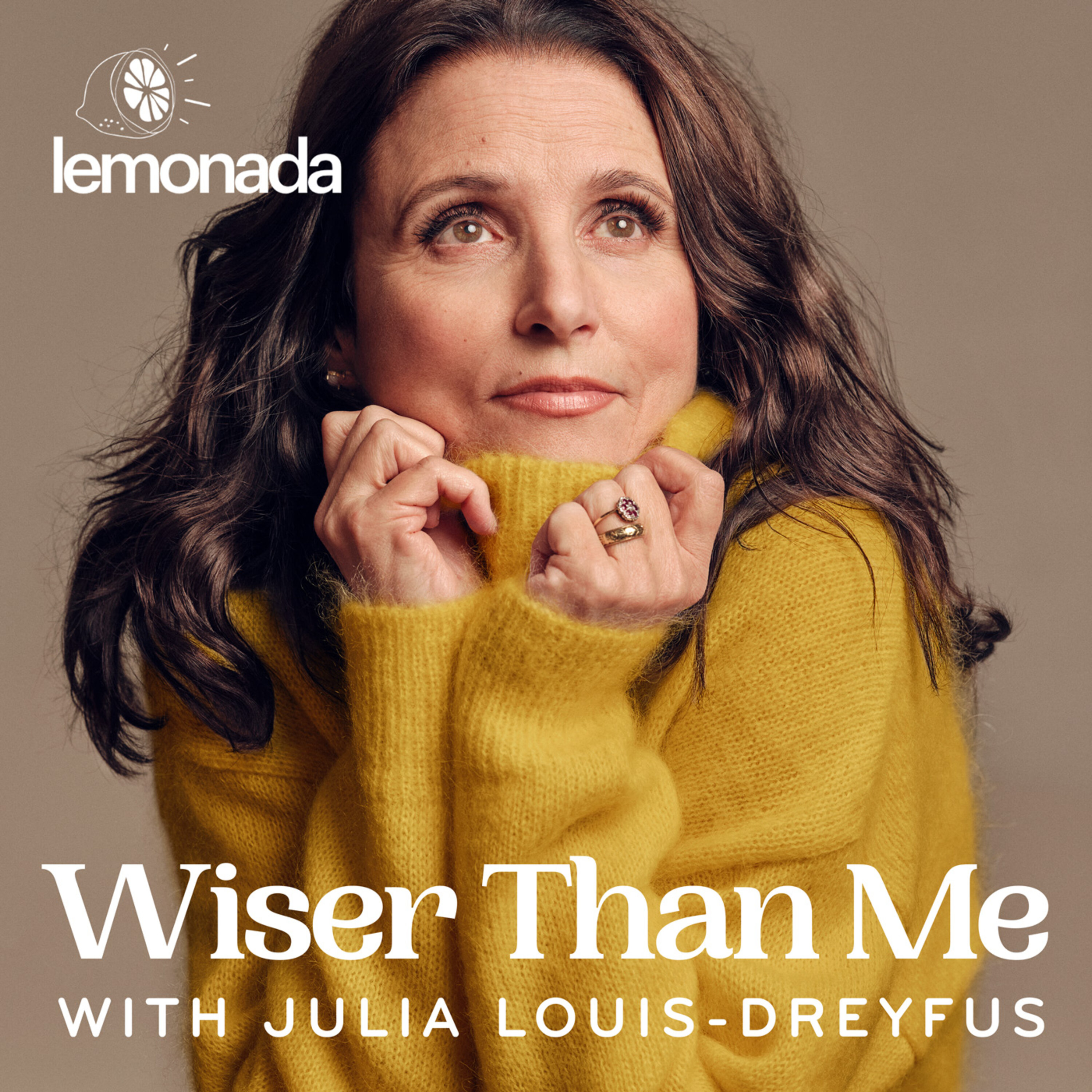
Wiser Than Me with Julia Louis-Dreyfus
Lemonada Media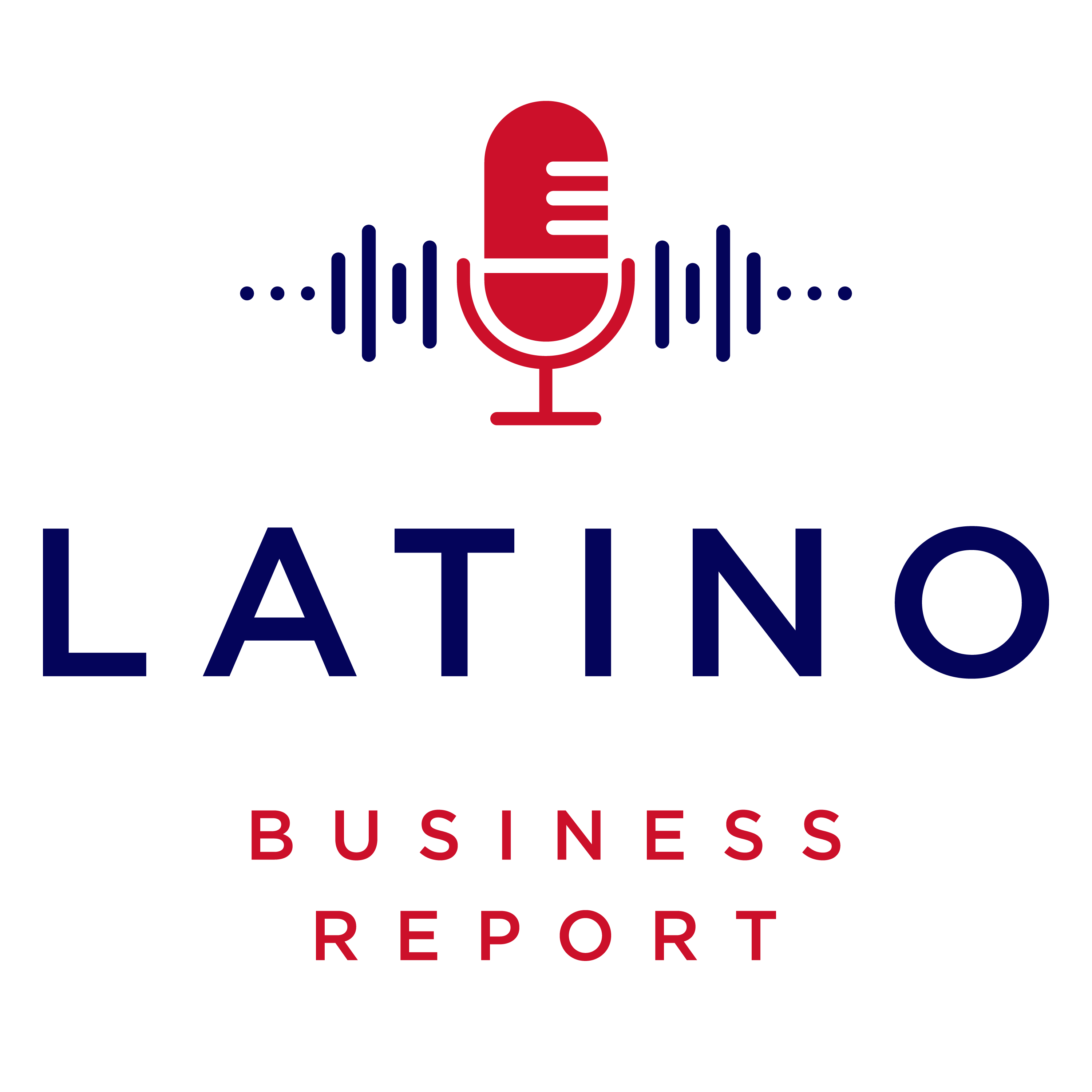
Latino Business Report
J.R. Gonzales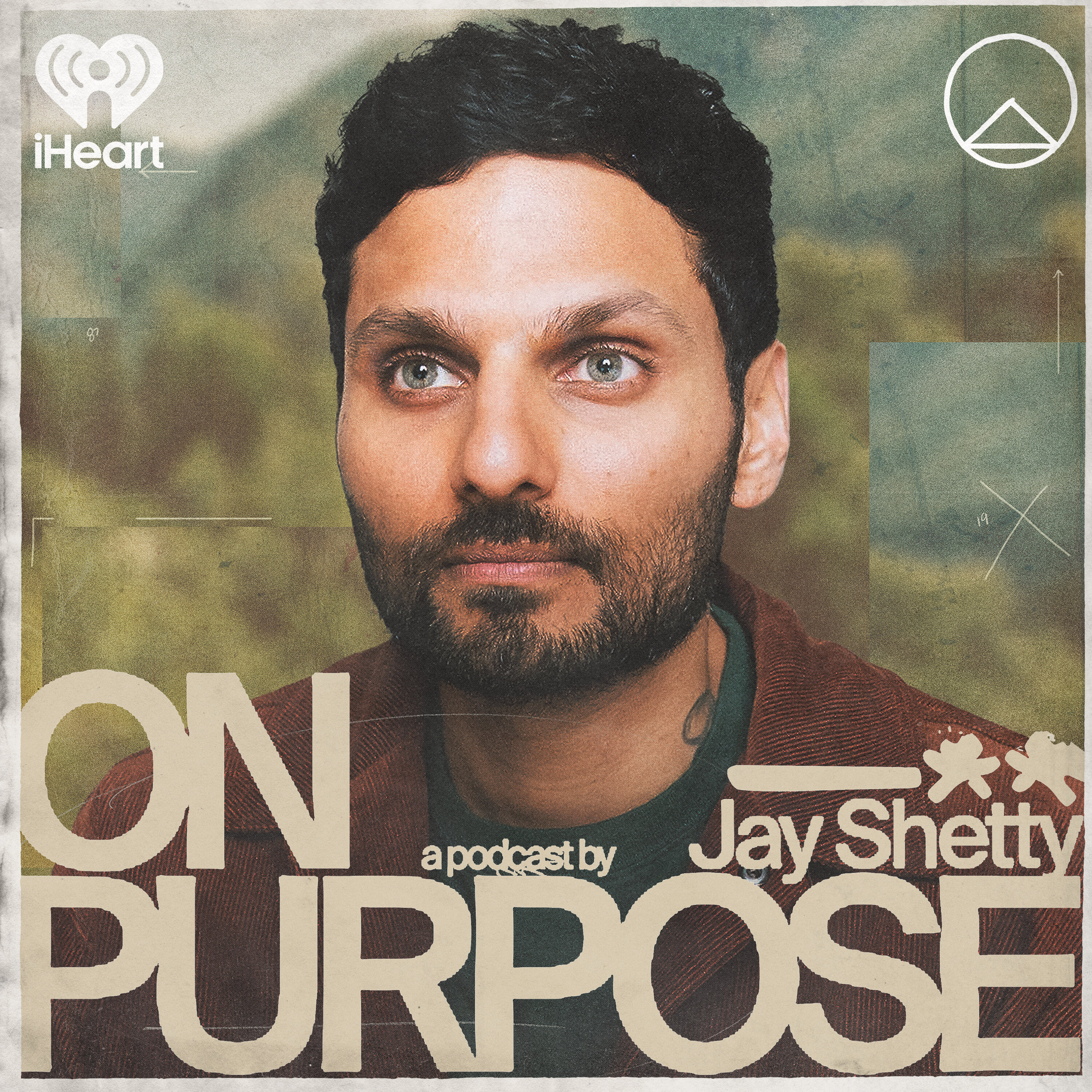
On Purpose with Jay Shetty
iHeartPodcasts
The Amy Porterfield Show
Amy Porterfield
The Marie Forleo Podcast
Marie Forleo
Buzzcast
Buzzsprout
The Joe Rogan Experience
Joe Rogan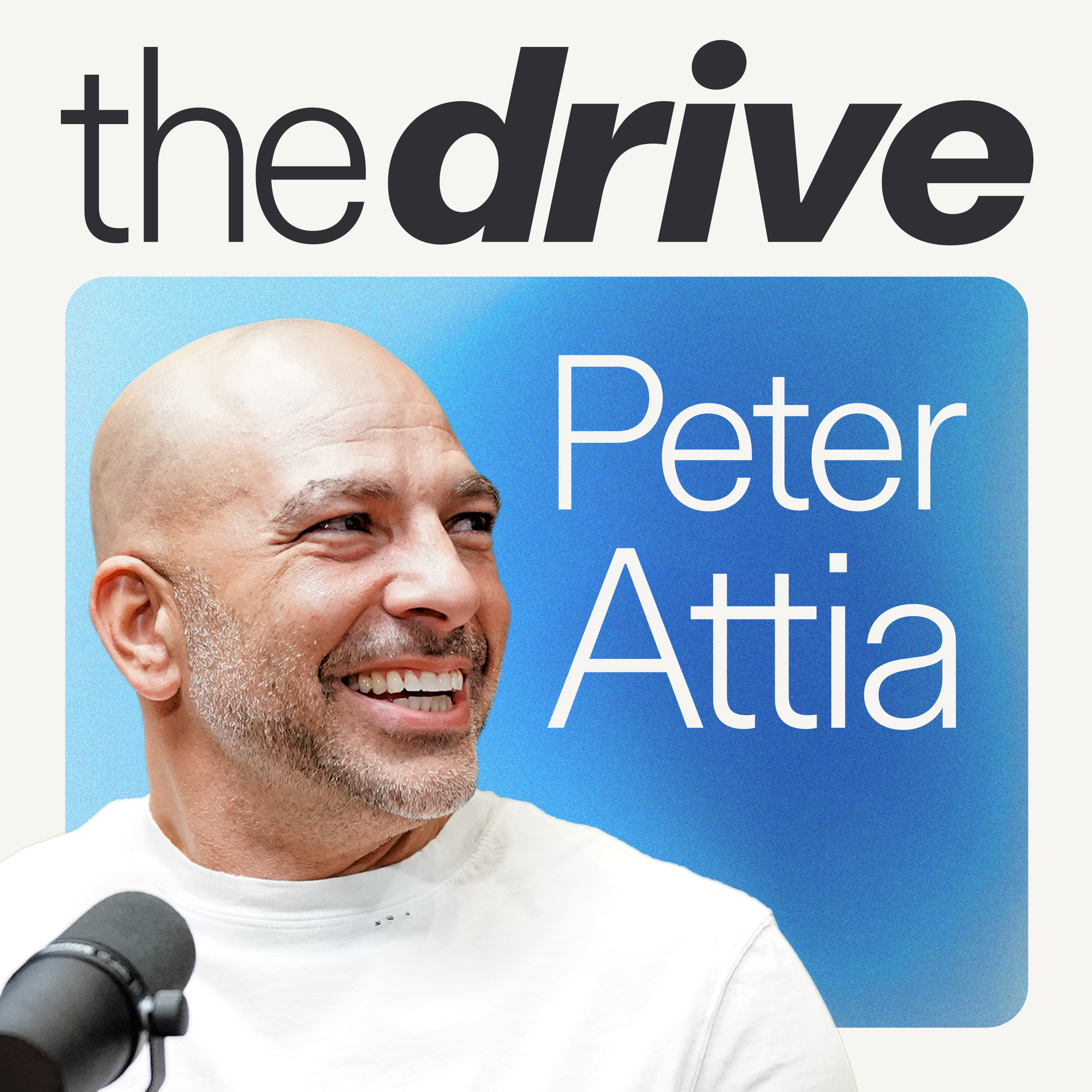
The Peter Attia Drive
Peter Attia, MD
The Minimalists
Joshua Fields Millburn, Ryan Nicodemus, T.K. Coleman
Oprah's Super Soul
Oprah
